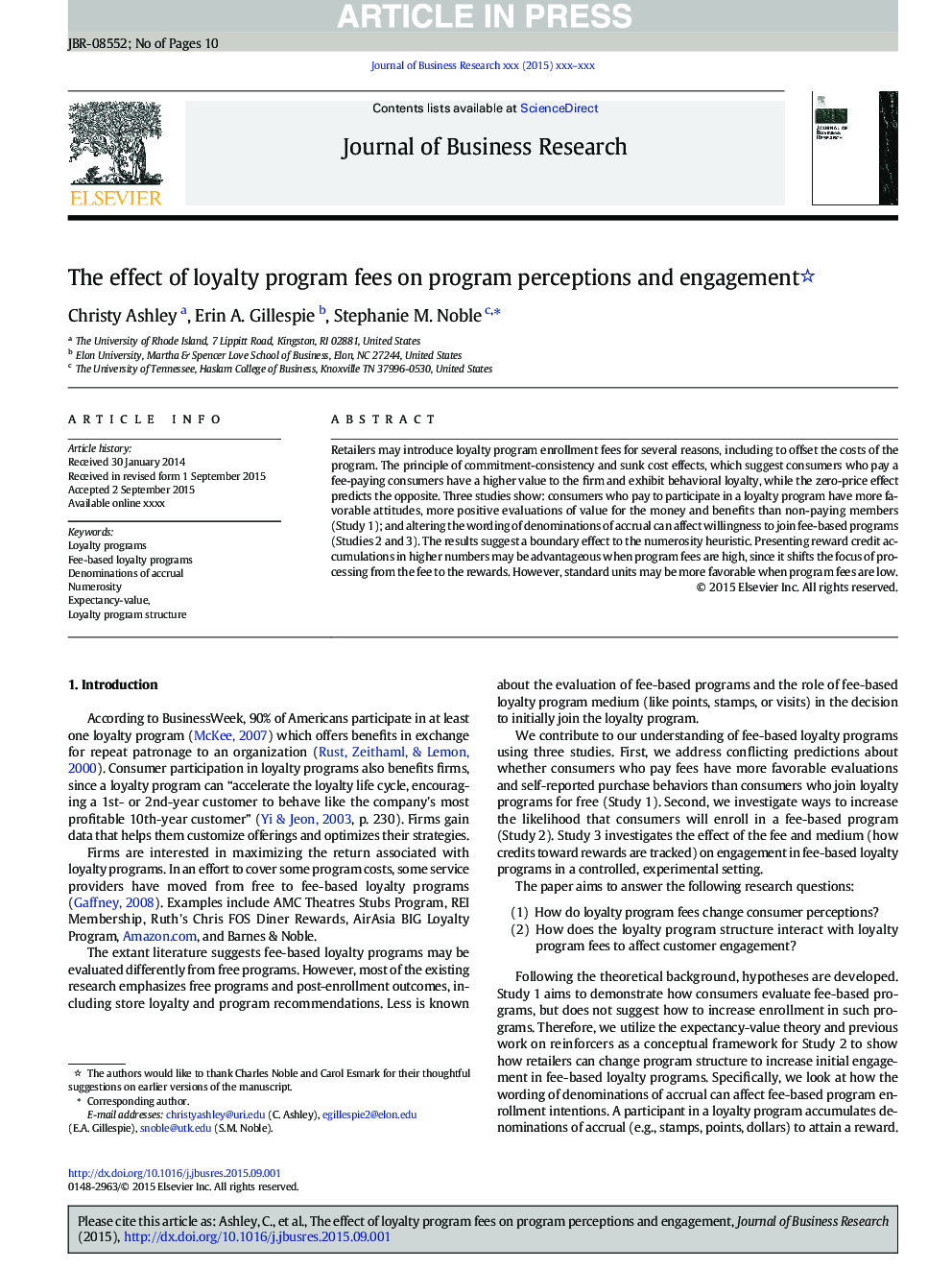| Article ID | Journal | Published Year | Pages | File Type |
|---|---|---|---|---|
| 10492878 | Journal of Business Research | 2016 | 10 Pages |
Abstract
Retailers may introduce loyalty program enrollment fees for several reasons, including to offset the costs of the program. The principle of commitment-consistency and sunk cost effects, which suggest consumers who pay a fee-paying consumers have a higher value to the firm and exhibit behavioral loyalty, while the zero-price effect predicts the opposite. Three studies show: consumers who pay to participate in a loyalty program have more favorable attitudes, more positive evaluations of value for the money and benefits than non-paying members (Study 1); and altering the wording of denominations of accrual can affect willingness to join fee-based programs (Studies 2 and 3). The results suggest a boundary effect to the numerosity heuristic. Presenting reward credit accumulations in higher numbers may be advantageous when program fees are high, since it shifts the focus of processing from the fee to the rewards. However, standard units may be more favorable when program fees are low.
Keywords
Related Topics
Social Sciences and Humanities
Business, Management and Accounting
Business and International Management
Authors
Christy Ashley, Erin A. Gillespie, Stephanie M. Noble,
